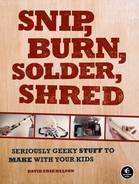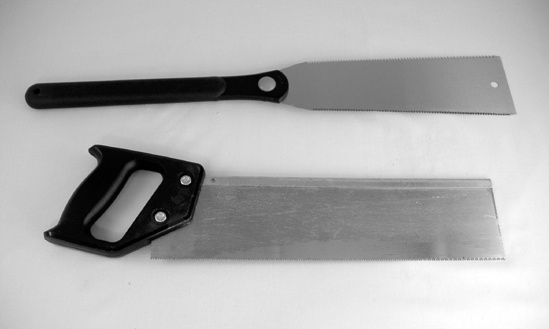Any old wood saw you have lying around is almost certainly a crosscut saw. These are designed to cut across the grain of a piece of wood, slicing on the forward stroke, when you are pushing. Since they need to stay rigid under pressure, crosscut saws must have fairly thick blades (i.e., a wider kerf). This often also means having larger teeth, which tend to tear up the wood, resulting in ragged edges and lots of splinters. Since a Japanese pull saw cuts on the back stroke, it’s under tension rather than compression. Thus, the blade can be significantly thinner (i.e., it has a narrower kerf) and the teeth finer, resulting in a very neat cut. As an added benefit, that flexible blade can cut very close to walls and floors when installing wood trim. While Japanese pull saws come in lots of styles and sizes, the one you’re most likely to find in the States is a ryoba (shown at the top of Figure 1-8), which has a double-sided blade. One edge has fine, alternating teeth and is used for cutting across the grain, while the other has large, jagged teeth and is used for ripping (cutting with the grain of the wood).
FYI, the thin blade of the pull saw can be tapped and waggled to make a neat wacky-musical-saw warble—keep this in mind when you start building your electro-skiffle band in Part II.

